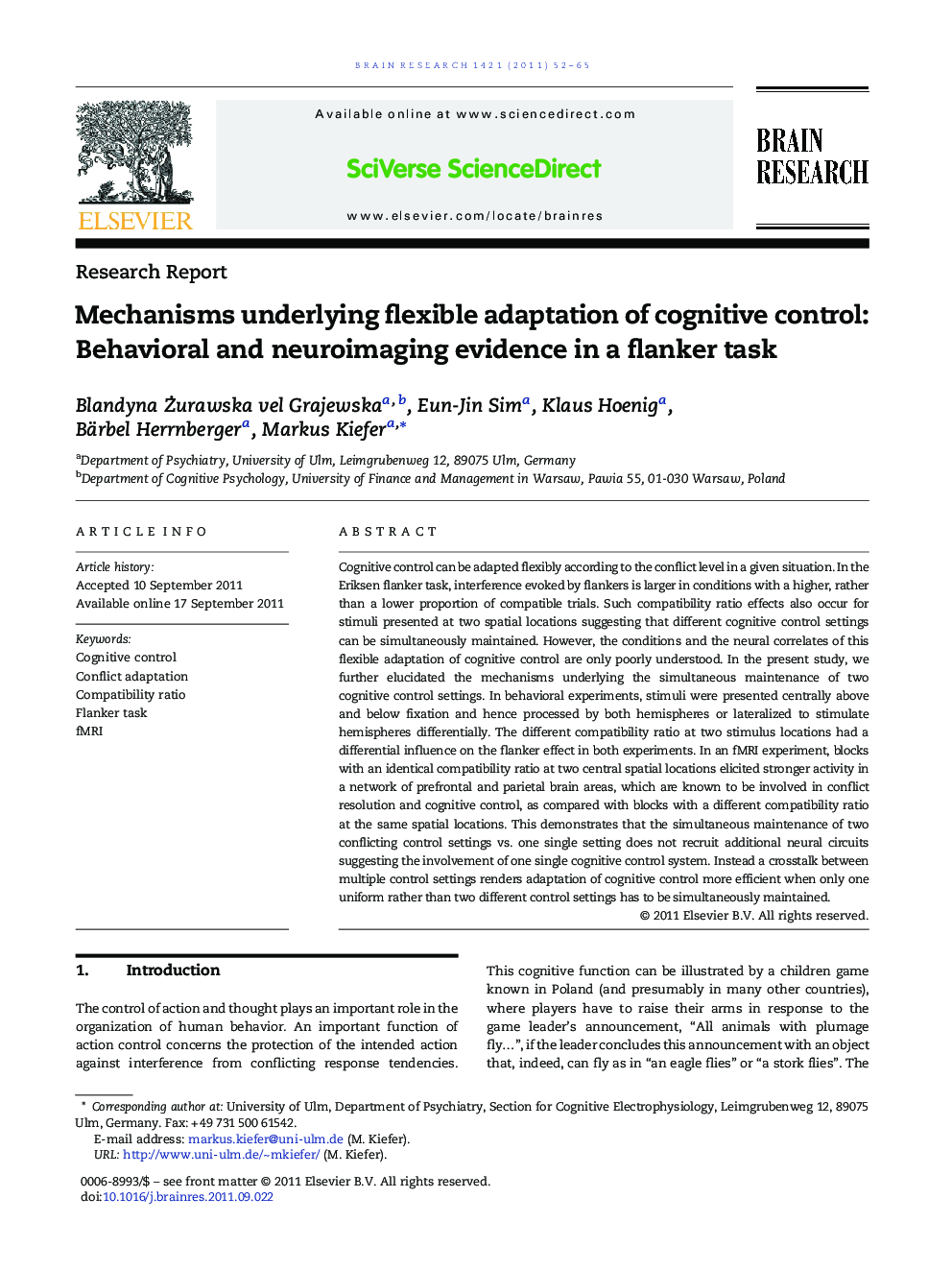| کد مقاله | کد نشریه | سال انتشار | مقاله انگلیسی | نسخه تمام متن |
|---|---|---|---|---|
| 6264691 | 1614018 | 2011 | 14 صفحه PDF | دانلود رایگان |

Cognitive control can be adapted flexibly according to the conflict level in a given situation. In the Eriksen flanker task, interference evoked by flankers is larger in conditions with a higher, rather than a lower proportion of compatible trials. Such compatibility ratio effects also occur for stimuli presented at two spatial locations suggesting that different cognitive control settings can be simultaneously maintained. However, the conditions and the neural correlates of this flexible adaptation of cognitive control are only poorly understood. In the present study, we further elucidated the mechanisms underlying the simultaneous maintenance of two cognitive control settings. In behavioral experiments, stimuli were presented centrally above and below fixation and hence processed by both hemispheres or lateralized to stimulate hemispheres differentially. The different compatibility ratio at two stimulus locations had a differential influence on the flanker effect in both experiments. In an fMRI experiment, blocks with an identical compatibility ratio at two central spatial locations elicited stronger activity in a network of prefrontal and parietal brain areas, which are known to be involved in conflict resolution and cognitive control, as compared with blocks with a different compatibility ratio at the same spatial locations. This demonstrates that the simultaneous maintenance of two conflicting control settings vs. one single setting does not recruit additional neural circuits suggesting the involvement of one single cognitive control system. Instead a crosstalk between multiple control settings renders adaptation of cognitive control more efficient when only one uniform rather than two different control settings has to be simultaneously maintained.
⺠Cognitive control can be adapted flexibly according to the conflict level. ⺠Compatibility ratio at two locations influences the behavioral flanker effect. ⺠An identical compatibility ratio elicits stronger activity in prefrontal cortex. ⺠Adaptation of cognitive control is more efficient for one single control setting.
Journal: Brain Research - Volume 1421, 3 November 2011, Pages 52-65